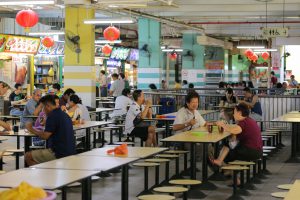Edible Heritage: Foodscapes and Sensory Heritage Making in Chinatown and Little India
June 13, 2022

On 13 June 2019, The Straits Times and Business Times podcast channel (ST & BT Podcasts) aired an episode on a guide to durian feasting. The durian is a fruit native to Southeast Asia, known for its pungent odour and thorny exterior. Its taste divides opinion, but it is popular eaten on its own, or added in small amounts to ice-creams, pastries, curries, and rice in the region. Indeed, food is particularly evocative; its taste, smell, texture, and even the place or setting where one had the meal can trigger memories. For that reason, food is intertwined with cultural heritage.
In the Heritage Research Grant ‘Edible Heritage: Foodscapes and Sensory Heritage Making in Chinatown and Little India’, funded by the National Heritage Board from 2018-2020, Associate Professor Kelvin Low (NUS Sociology) and Dr Hui Yew-Foong (Institute of Southeast Asian Studies—Yusof Ishak Institute) explored case studies of Chinatown’s and Little India’s foodscapes and analyse their linkages to sensory heritage in Singapore.
Through the case studies, the project finds that everyday memories and gastronomic experiences play important roles in delineating and constructing sensory heritage. The findings will contribute to the study of intangible cultural heritage, social memory, and food studies in Singapore.
